| software | GEANT3.21 |
| generated K-+4He | at rest |
| generated final state | &Lambda d n/&Sigma0 d n = 50%:50% |
| dynamics(matrix evaluation) | uniform on 3-body phase space with 2.0*109 events |
| dynamics(dummy data) | (K-+4He)->3S++n ,3S+->Y0+d / (K-+4He)->2S0+d ,2S0->Y0+n :: &Lambda : &Sigma0=50:50 |
| generated event number | 2.5*108(phase space)/2.0*107/10 MeV/c2(multibaryons) |
| target center | (-0.3,0.,1.3):E549 |
| x/y generation point distribution | 4.0 cm sigma Gaussian centered at (x,y)=(-0.3,0.) |
| z generation point distribution | uniform |
| multiple scattering | on(Moliere) |
| energy loss straggling | on(Gauss/Landau/Vavilov are internally selected adequately) |
| nuclear reaction of d/p/&pi | on(GHEISHA) |
| coincidense time gate for PA-PB | 45 nsec |
| Birk's coefficient for plastic scintillator | 0.013/(MeV/cm) |
| Time resolution of PA/PB for p/d/&pi | 60/80 psec |
| Convoluted time resolution of TC_B+PA for p/&pi | 250 psec |
| Analysis inefficiency for p/d/&pi selection | p:properly simulated / d:properly simulated / &pi:neglected |
| Analysis inefficiency for p/d/&pi energy-loss correction | Not simulated |
| Analysis inefficiency for &Lambda reconstruction by p&pi invariant-mass gate | Not simulated |
| bin widths | 10 MeV/c for p&Lambda and pd, 0.05 for cos&theta&Lambda d,10 MeV/c2 for M&Lambda d and M2S0 |
In order to evaluate the function practically, we divide p&Lambda, pd, cos&theta&Lambda d into finite number of bins. Then, the acceptance matrix, &epsilon(p&Lambda , pd , cos&theta&Lambda d) is defined as
&epsilon(p&Lambda , pd , cos&theta&Lambda d)=D(p&Lambda , pd , cos&theta&Lambda d)/G(p&Lambda , pd , cos&theta&Lambda d),
where D(p&Lambda , pd , cos&theta&Lambda d),G(p&Lambda , pd , cos&theta&Lambda d) are detected and generated event numbers in each 3-dimensional bin. In a similar way, the acceptance matrix, &epsilon(M&Lambda d , M2S0 , cos&theta&Lambda d) is defined as&epsilon(M&Lambda d , M2S0 , cos&theta&Lambda d)=D(M&Lambda d , M2S0 , cos&theta&Lambda d)/G(M&Lambda d , M2S0 , cos&theta&Lambda d),
which is verified by 1-to-1 correspondance between (p&Lambda,pd,cos&theta&Lambda d) and (M&Lambda d , M2S0 , cos&theta&Lambda d). As a test in the first stage, let we adopt exact values of variables (For the event selection, we use 1/&beta simulated with finite resolutions of PA-PB as in the table). As cos&theta&Lambda d is uniquely determined in &Lambda d n final state if p&Lambda and pd are given, it is impossible to cover whole 3D region where finite event input is expected - hence, we do need &Sigma0 d n final state as well.K- + 4He -> &Lambda + d + n/&Lambda&gamma + d + n (3-body phase space)
K- + 4He -> 3S+ + n(3S+ production by 2-body phase space) ->&Lambda + d/&Lambda&gamma + d(2-body phase space)
K- + 4He -> 2S0 + d(2S0 production by 2-body phase space) ->&Lambda + n/&Lambda&gamma + n(2-body phase space)
, and examine the validity of the evaluated acceptance matrix. If we succeed to reconstruct the emitted number spectra from detected ones for all data sets, then the matrix is considered to be appricable to the data. Here, we examine the reproduction of the following five quantities,Pd>470 MeV/c, P&Lambda>280 MeV/c, cos&theta&Lambda d<-0.60
. Hereafter, the generated and corrected spectra are presented by black and red/green, respectively. The red is used for the acceptance correction with (Pd,P&Lambda, cos&theta&Lambda d), while the green is used for that with (M&Lambda d, M2S,cos&theta&Lambda d), although, the condition is commonly adopted. If the error, which is described just after the section, is well-defined, then they are presented as error bars. As exhibitted below, the strength of the corrected spectra is substantialy lower than the produced ones especially at lower momenta/larger angle - which originates from the contribution from the bins with no detected event.
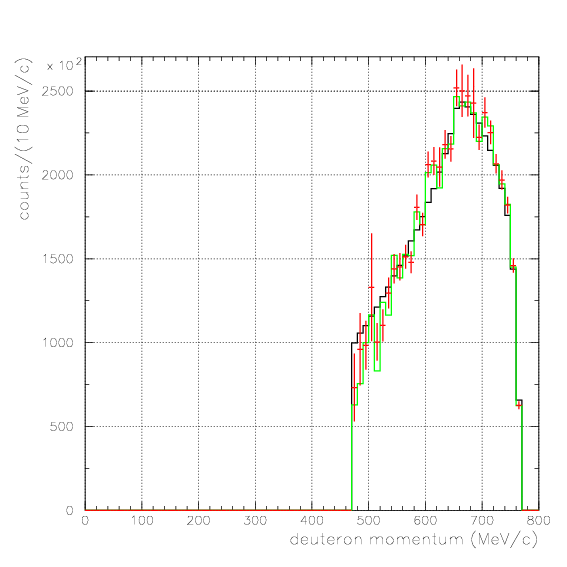
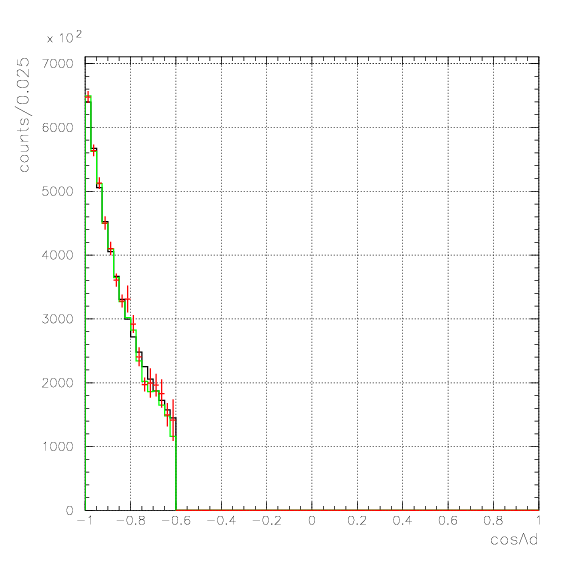
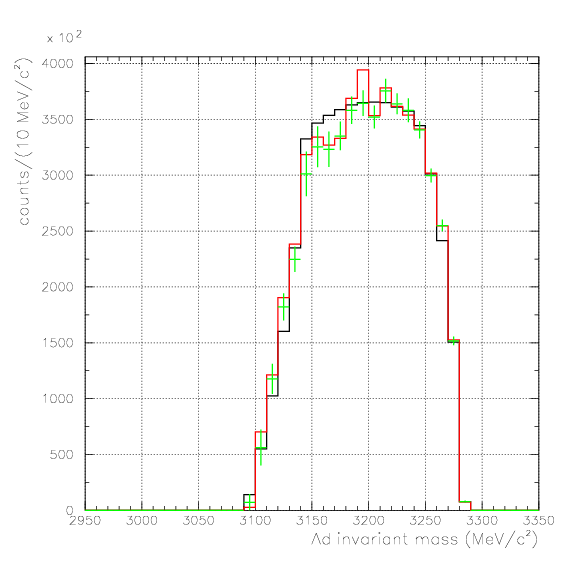
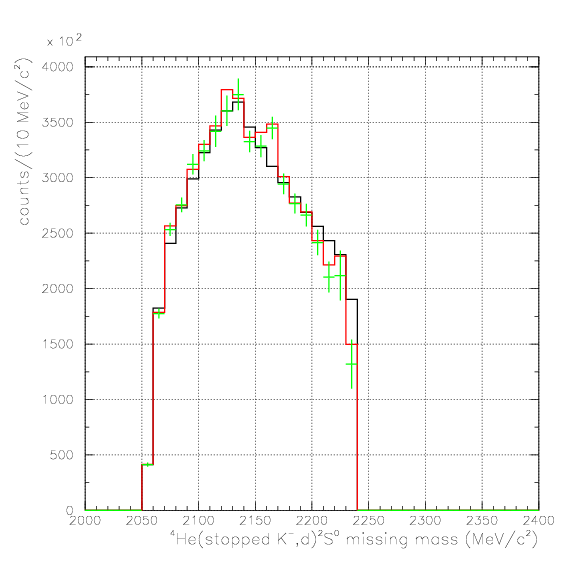
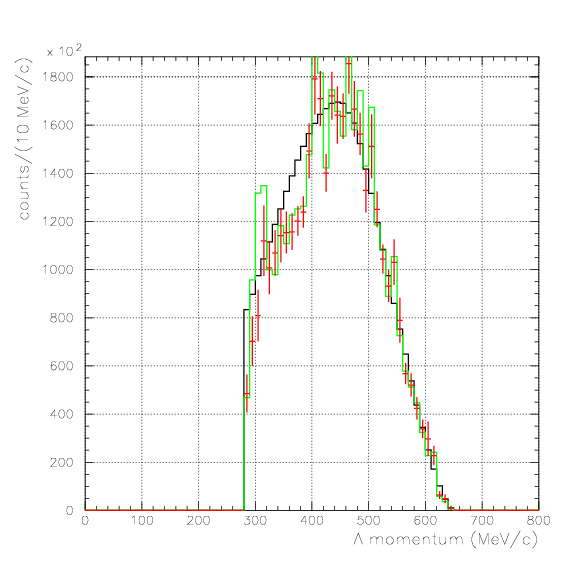

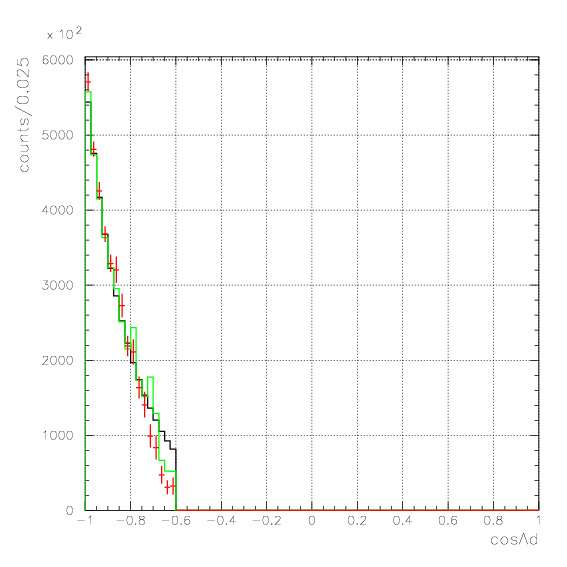
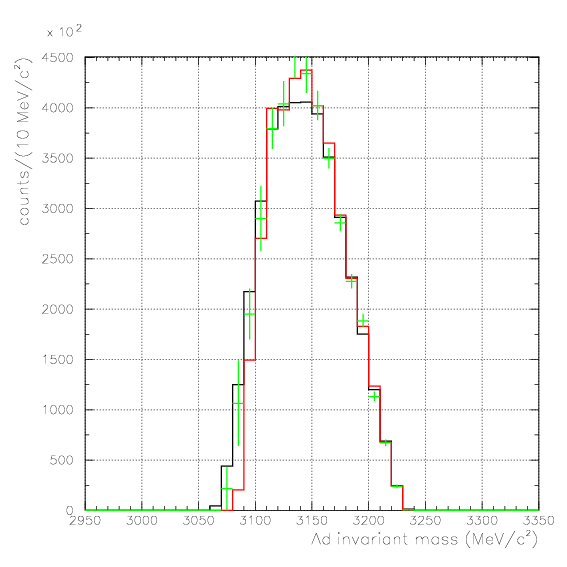

Therefore, we must reduce the (Pd, P&Lambda, cos&theta&Lambda d) region to ensure finite number of event contents in all of bins. Hereafter, we reduce the 3D region of the correction to be
Pd>550 MeV/c, P&Lambda>350 MeV/c, cos&theta&Lambda d<-0.80
, and examine the acceptance correction for different processes.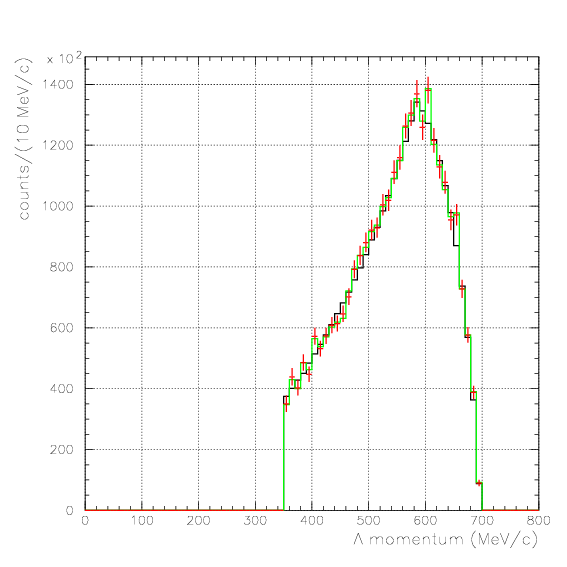
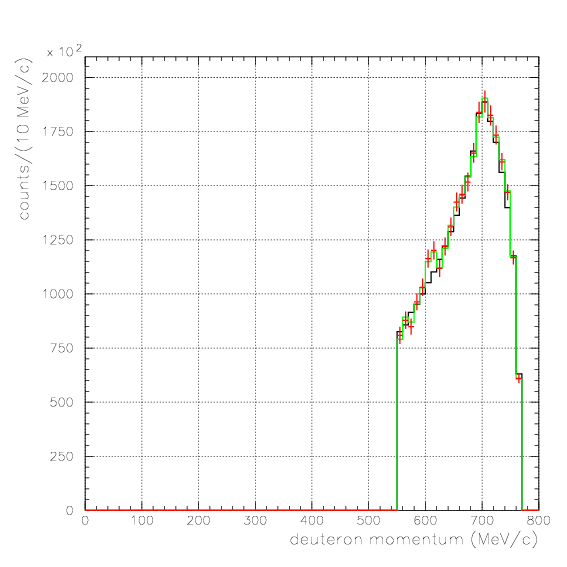
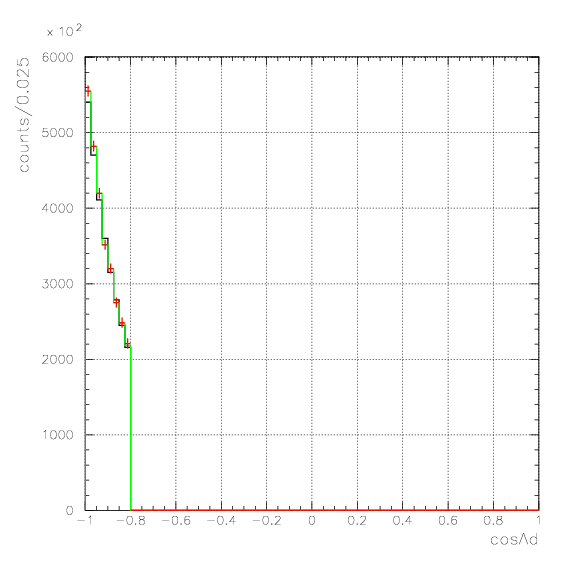




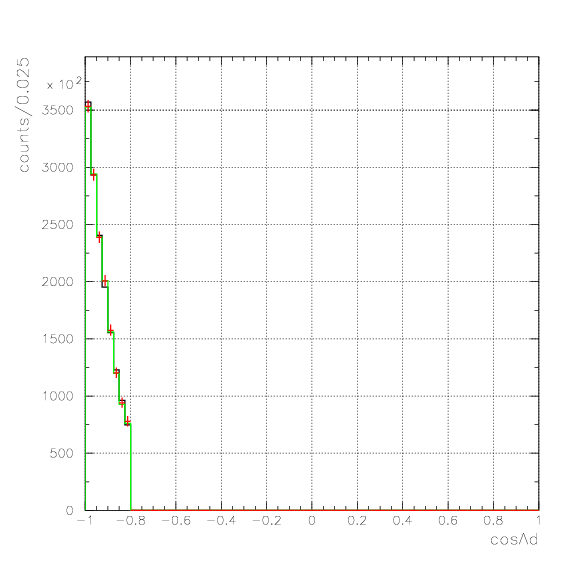
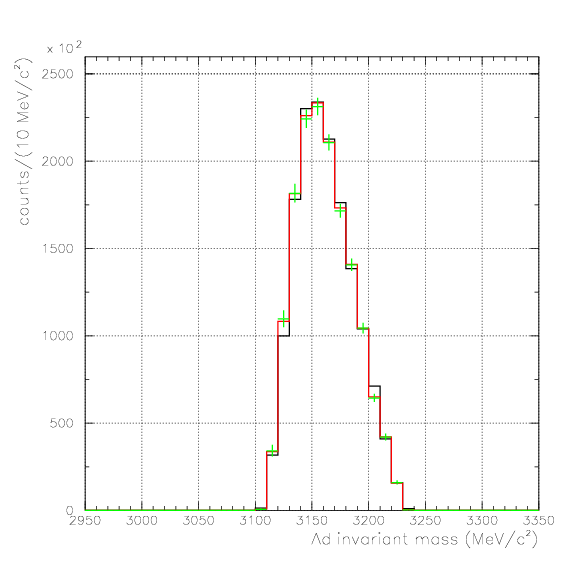

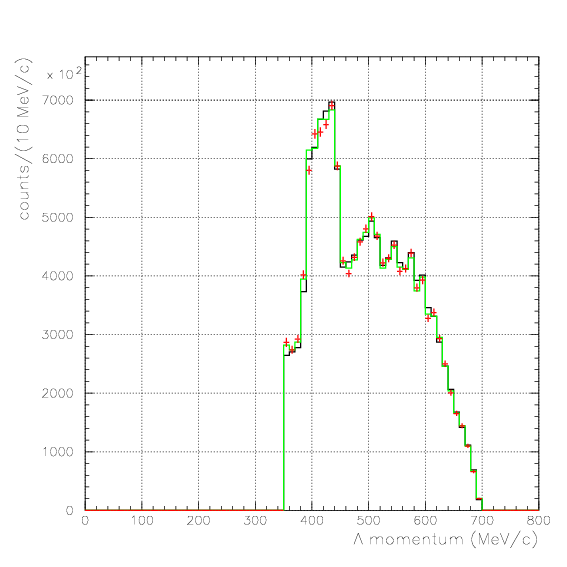

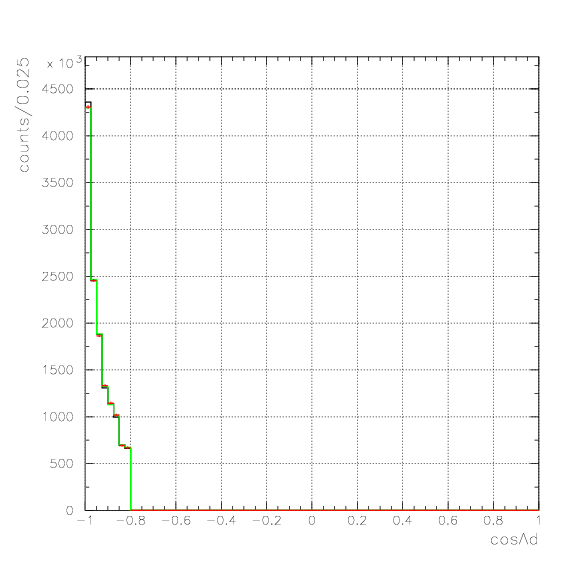
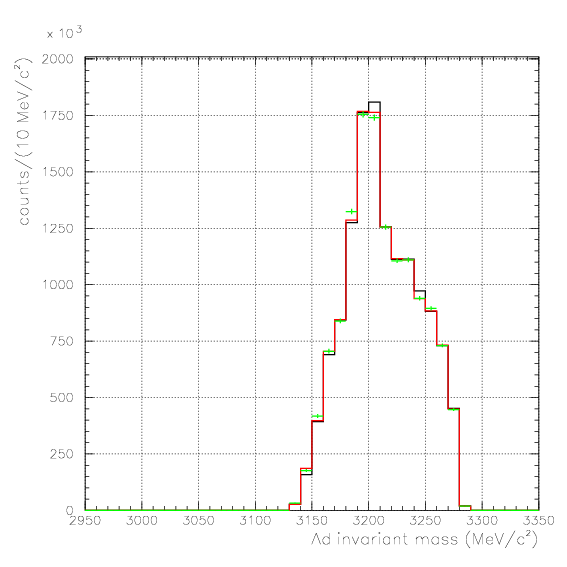
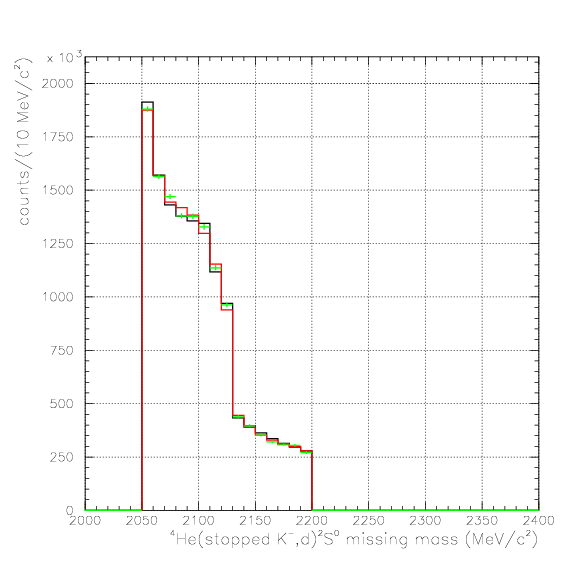
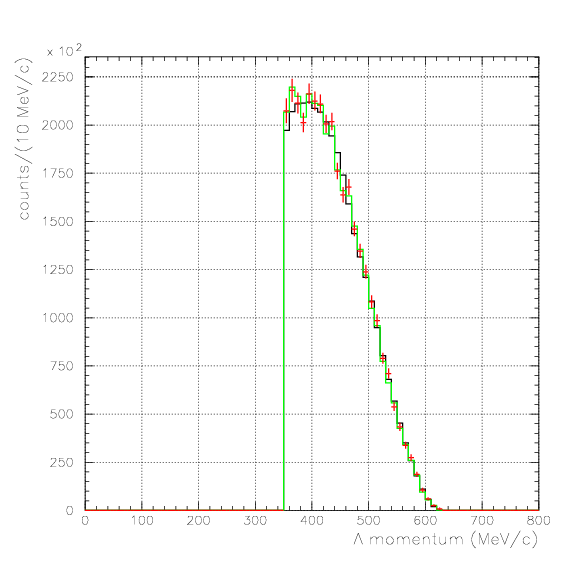
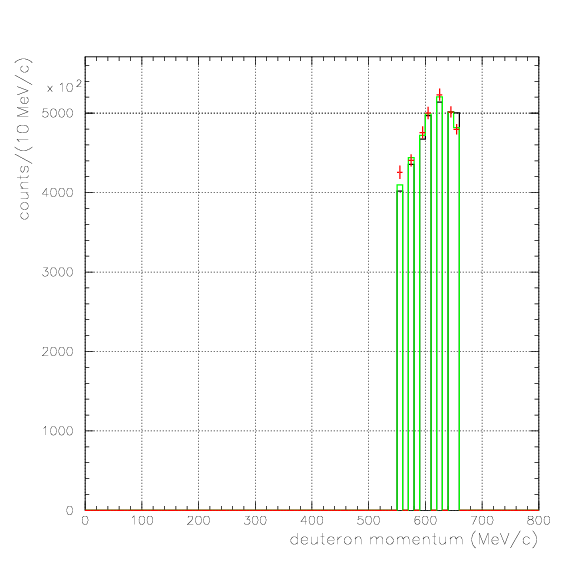

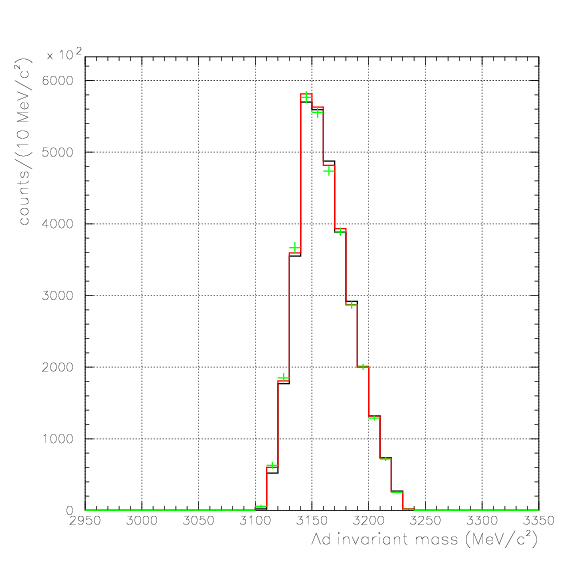

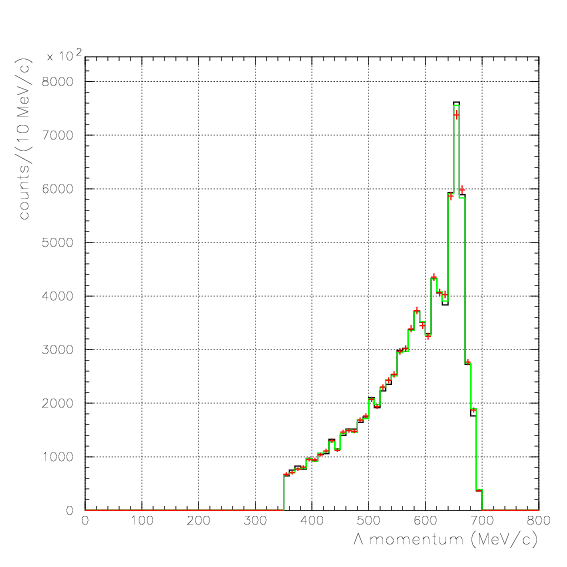
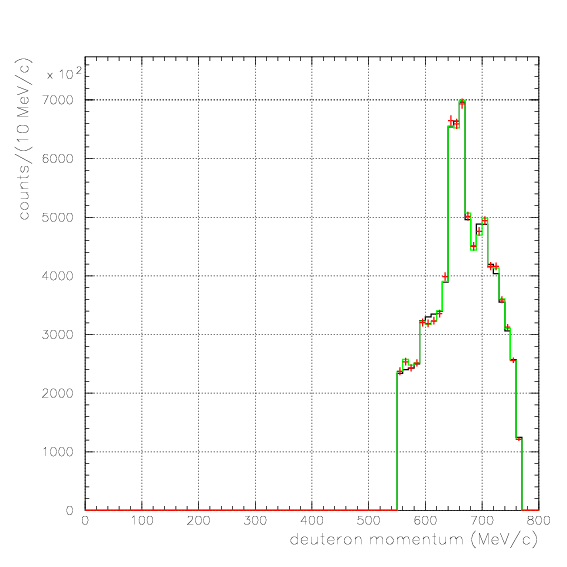


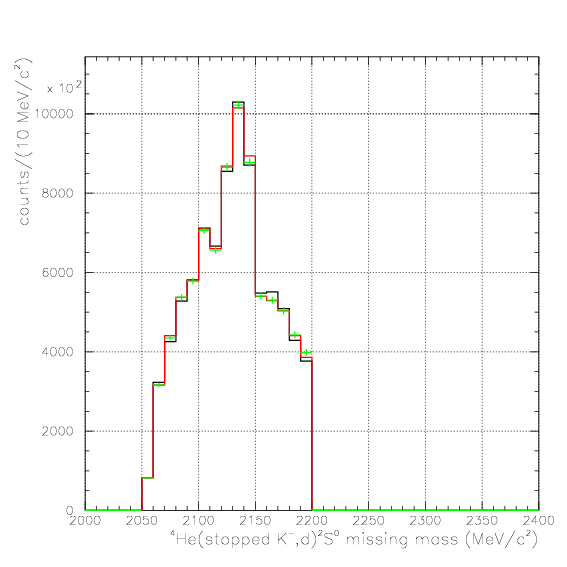
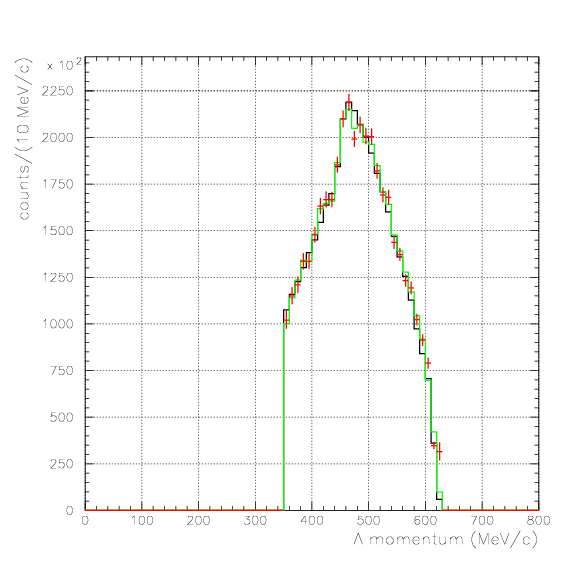
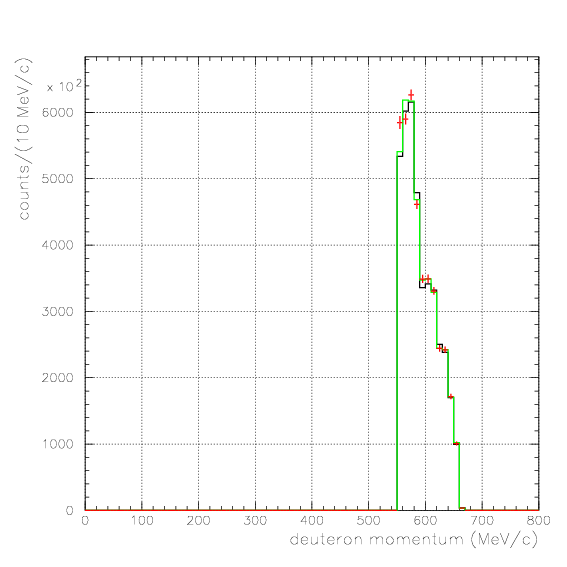
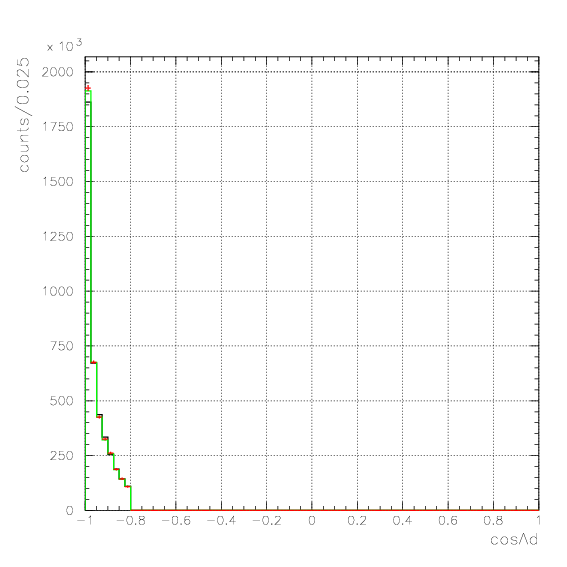
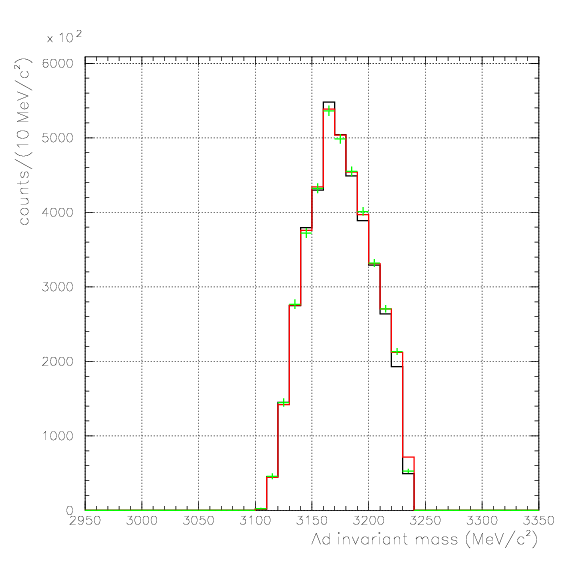
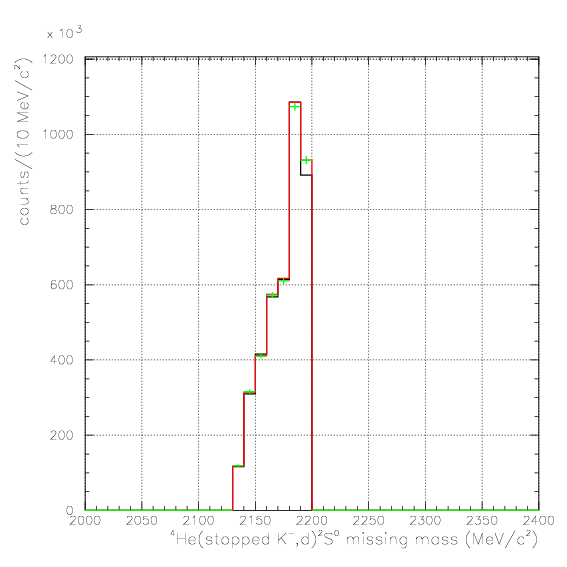
1. Pd, P&Lambda, cos&theta&Lambda d,
2. M2S0(=4He(stopped K-,d)2S0 missing mass), M&Lambda d, cos&theta&Lambda d,
which is connected by 1-to-1 corespondance, to allow the error evaluation of projected histgrams. Set 1 is used for the normalization of Pd, P&Lambda, cos&theta&Lambda d, and set 2 is used for M2S0, M&Lambda d, cos&theta&Lambda d, and the bin-by-bin error of variable k, Ek, is evaluated asEk=sqrt(&Sigmai &Sigmaj Cijk/&epsilonijk2),
which is attributed to the bin contents,Ck=&Sigmai &Sigmaj Cijk/&epsilonijk.
The comparison between original spectra and corrected ones with attributed error was already shown. Hereafter, the definition is always adopted regardless the method of the evaluation of the acceptance matrix and/or the kind of data (i. e. real or simulated data).